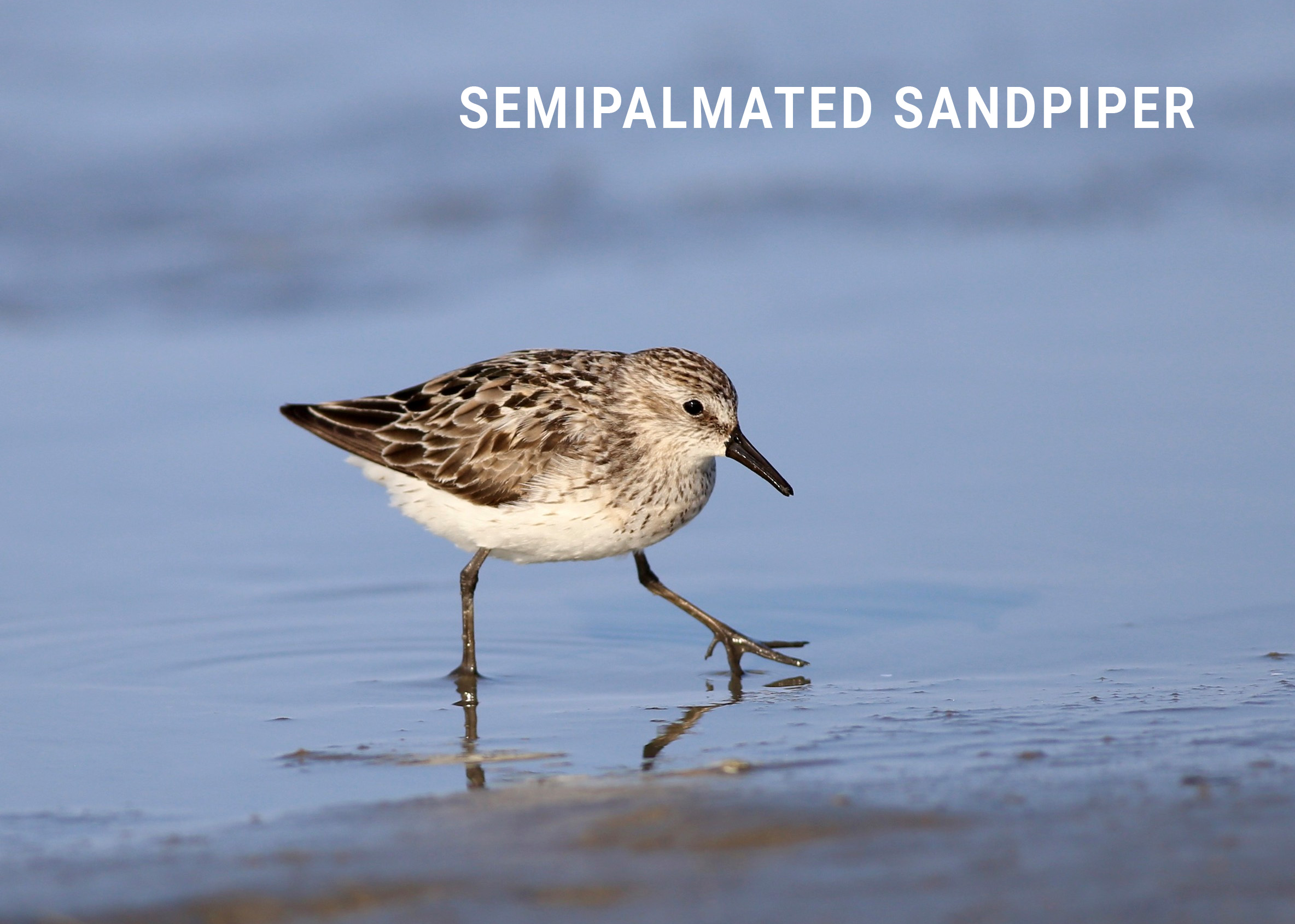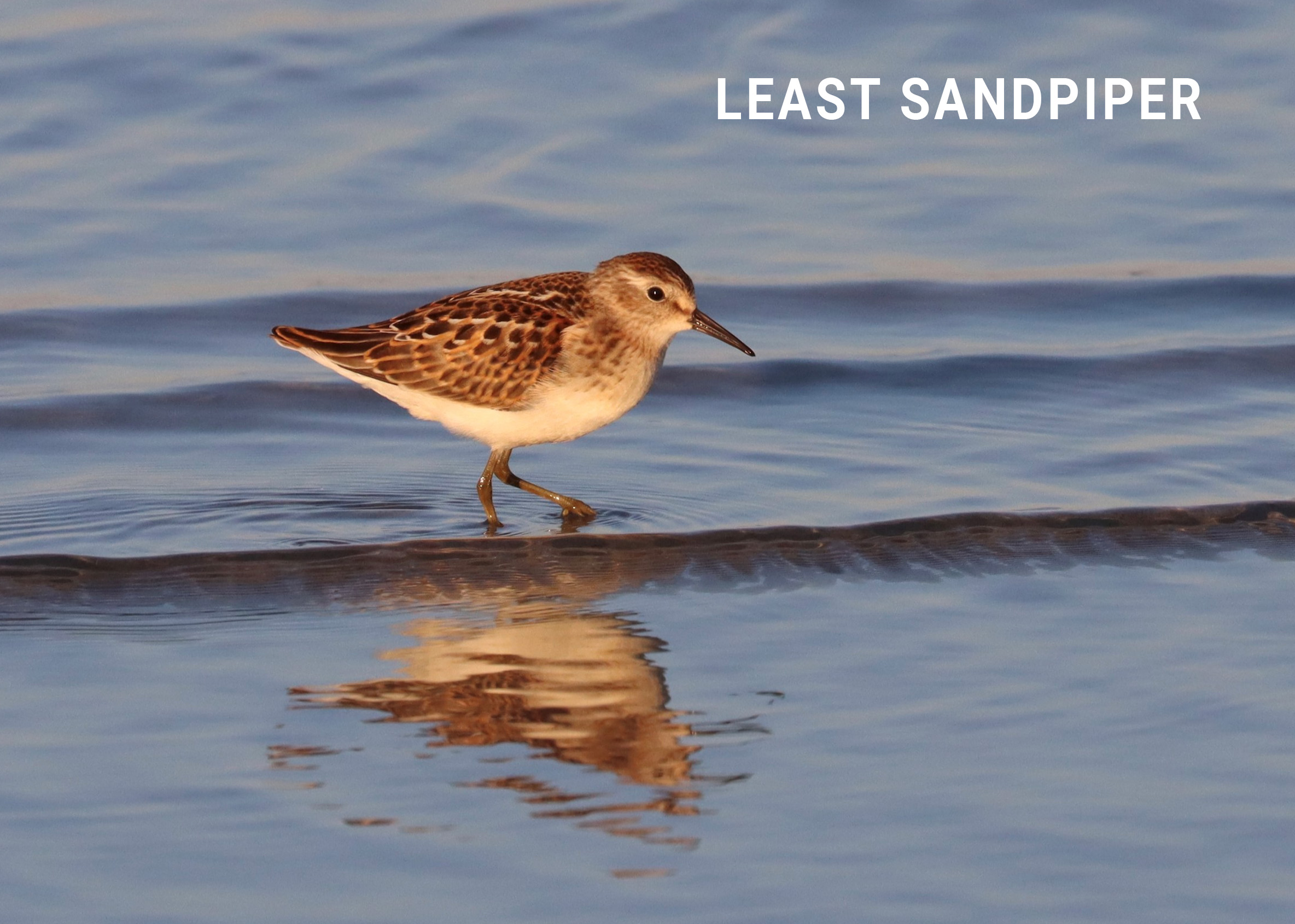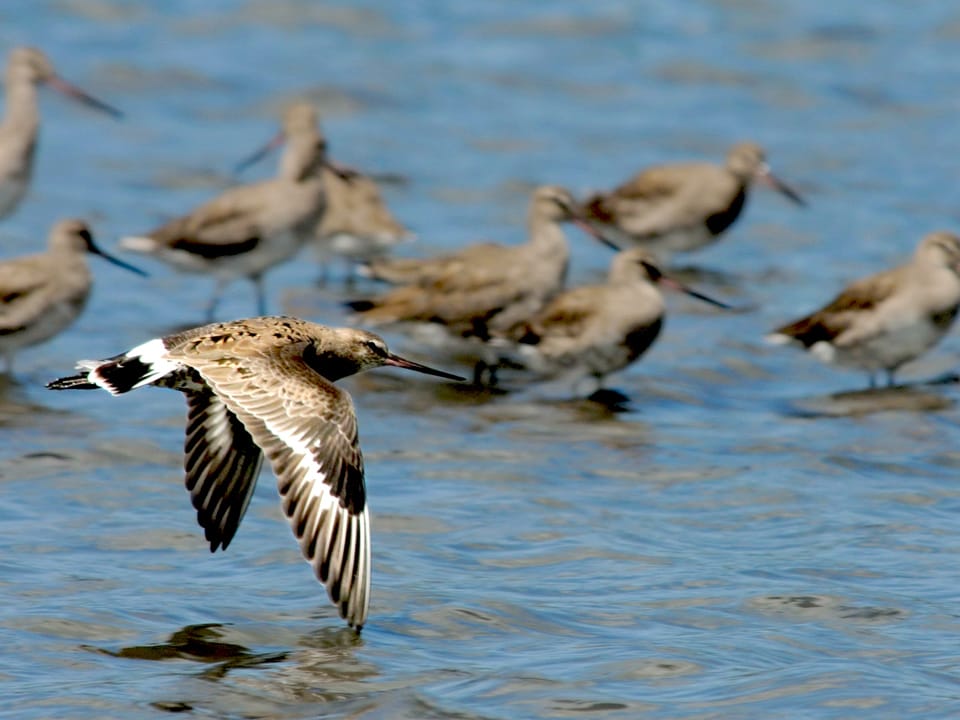Late Summer is an exciting time to be a shorebirder in New England. Our local populations of plovers, willets, and oystercatchers are suddenly augmented with the return of Arctic nesting shorebirds heading south after breeding success (or failure). There are about 22 species of shorebirds that regularly pass through New England during their southbound migration, ranging in size from the 19-inch-tall Marbled Godwit to the precious “peeps” only inches off the ground. When working through an ID, it’s useful to start with size, so we decided to present three common small (five to seven inches) shorebirds: the Semipalmated Plover, the Semipalmated Sandpiper, and the Least Sandpiper.
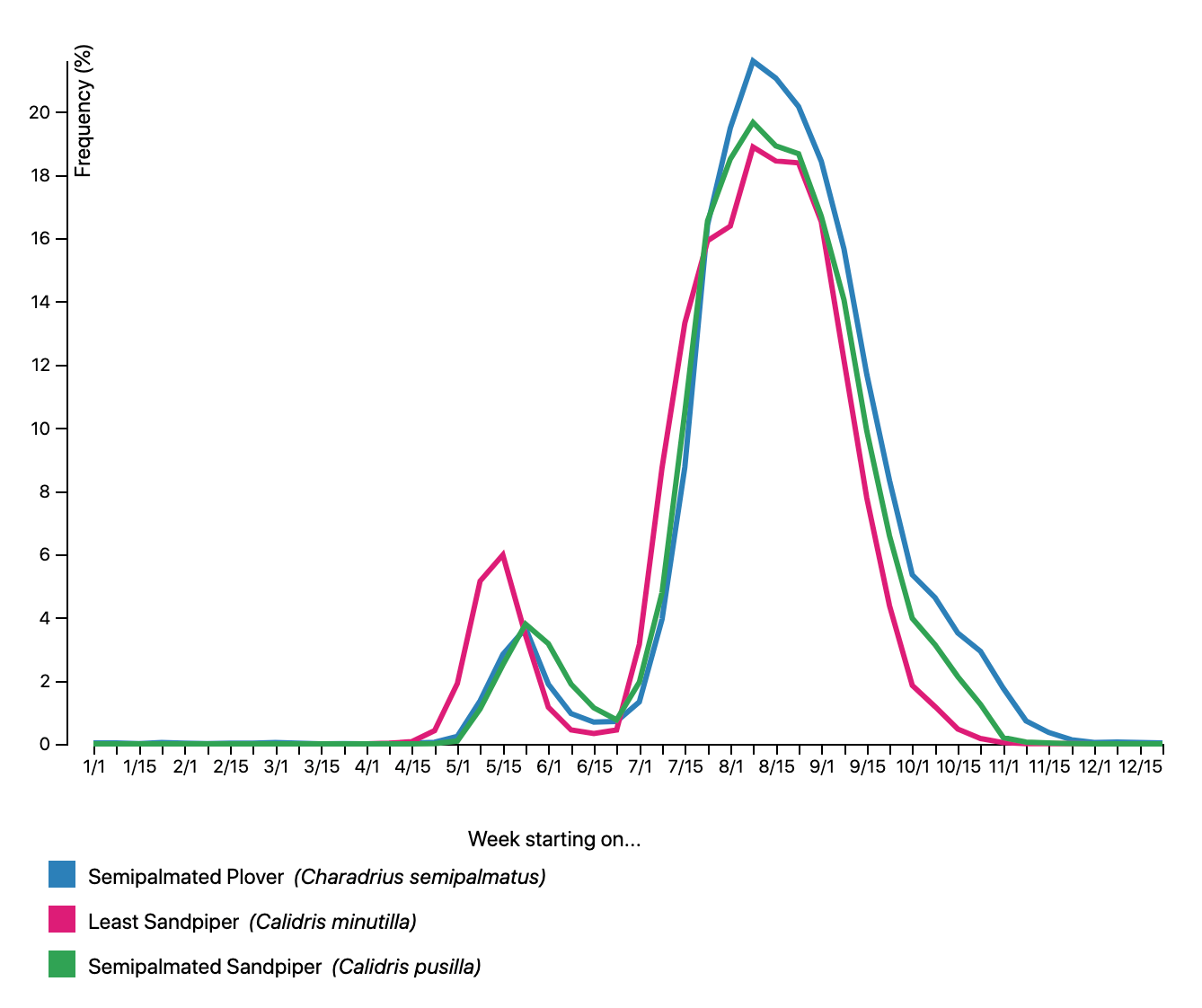
As you can see from the frequency graph in eBird (Explore Regions->Your State->Bar Charts->Scroll to your Species->Click on the little graph icon), they arrive in large numbers in July, using the beaches of New England to rest and fatten up before continuing on their way to their wintering grounds as far away as South America.
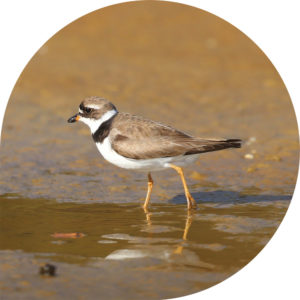
The Semipalmated Plover is medium brown above contrasting to bright white below, with a striking single black breast band (make sure only one…if there are two, you are looking at a Killdeer). These are most likely feeding by picking at small invertebrates from the surface of mudflats and beaches with their stubby bill. The name “Semipalmated” refers to the partial (semi) webbing (palmate) between their toes. They spend winters on coastal areas from the mid-Atlantic states to South America.
The Semipalmated Sandpiper (below, left) is overall a cool grey color, though it can have some rusty or brownish mottling on the back, depending on how much of its breeding plumage it’s retaining. The bill is black and longer than the plover bill, so it can both peck at the surface and probe in the sand to find its prey. For such a small shorebird, they undertake remarkable journeys, breeding on the Arctic tundra and can spend the winter as far south as the southern coast of Brazil.




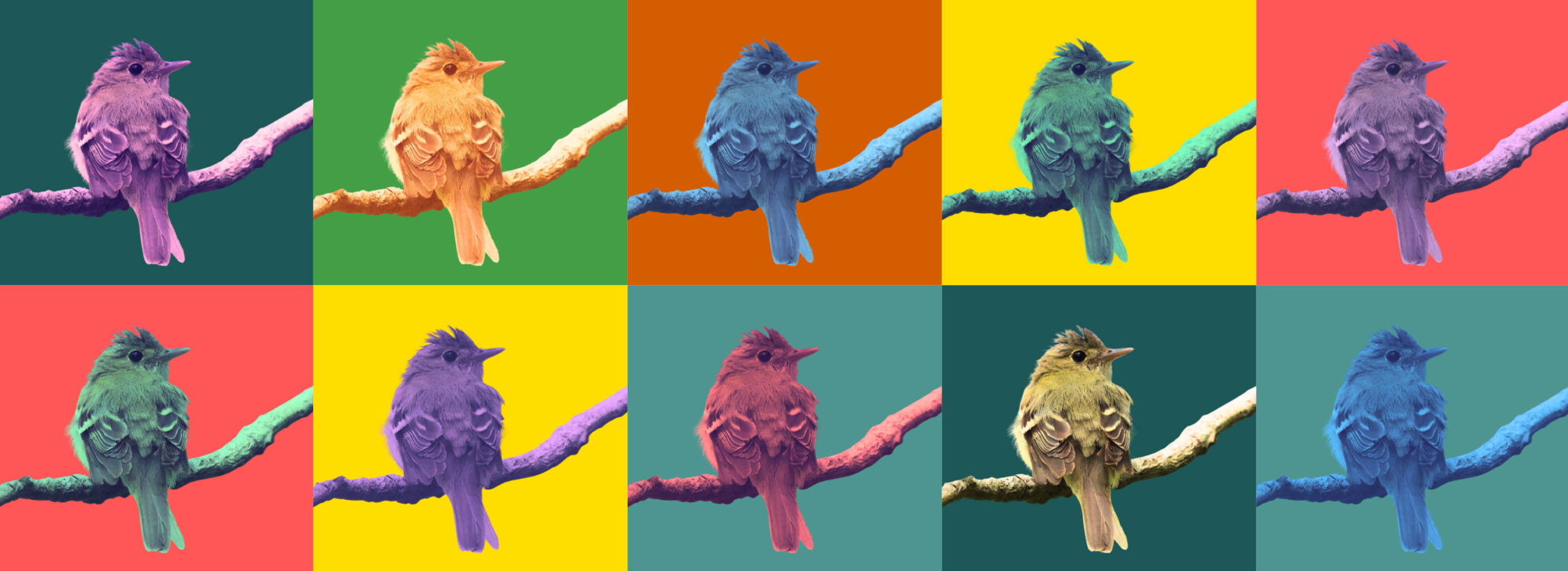
 Back to all
Back to all
